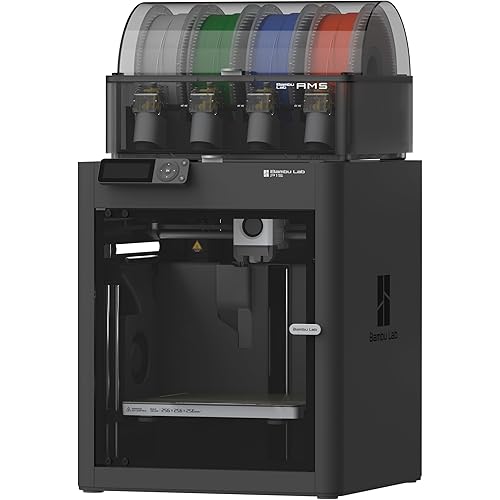ANYCUBIC Resin 3D Printer, Photon M3 Max SLA LCD UV Resin Printers with 13.6'' 7K Mono Screen, Smart Resin Filler, Large 3D Printing Size 11.7'' x 6.5'' x 11.81''







Notify me when this product is back in stock
Buy Now, Pay Later
- – Up to 36-month term if approved
- – No impact on credit
- – Instant approval decision
- – Secure and straightforward checkout
Payment plans are offered through our trusted finance partners Klarna, Affirm, Afterpay, Apple Pay, and PayTomorrow. No-credit-needed leasing options through Acima may also be available at checkout.
Learn more about financing & leasing here.
Selected Option
Returnable until Jan 31, 2026 Learn more
To qualify for a full refund, items must be returned in their original, unused condition. If an item is returned in a used, damaged, or materially different state, you may be granted a partial refund.
To initiate a return, please visit our Returns Center.
View our full returns policy here.
Recently Viewed
Style: M3 Max
Features
- Extraordinary Printing Size, Anycubic Photon M3 Max with a 11.7'' x 6.5'' x 11.81'' building size, which is the largest one of Anycubic resin 3d printer so far. The practical printing volume can meet the printing needs of your large-scale models, while achieving batch printing and improving production efficiency.
- Well-defined Print Details. comes with a 13.6 7K HD Mono Screen, Photon m3 max achieves the large size printing while maintaining the precision of the model. Coupled with the Z-axis rail of the ball screw, and the high contrast ratio of 450:1, it can better reproduce the details, making your model more different.
- Fast Printing Speed. The ANYCUBIC Photon M3 max mono screen is composed of 84 LED lights neatly arranged, providing a powerful matrix light source that shortens the printing time of each layer to 3 seconds, and can achieve fast printing of up to 60mm/h.
- Automatic Resin Feeding, Anycubic Auto Resin Filler can intelligently replenish resin and stop replenishing, reducing printing failures caused by insufficient resin, making your time more free.
- Upgraded Function. Photon M3 Max adopts laser engraving 3D printing platform, which has better platform adhesion than brushed platform and improves success rate. At the same time, anti-scratch film can reduce the screen damage caused by resin leakage and save the high cost of replacing the screen.
Brand: ANYCUBIC
Material: Resin
Color: Black, Yellow
Product Dimensions: 6.5"D x 11.7"W x 11.8"H
Item Weight: 20.5 Kilograms
Product Dimensions: 29.53 x 22.83 x 23.23 inches
Item Weight: 45.1 pounds
Date First Available: June 30, 2022
Manufacturer: ANYCUBIC
Frequently asked questions
To initiate a return, please visit our Returns Center.
View our full returns policy here.
- Klarna Financing
- Affirm Pay in 4
- Affirm Financing
- Afterpay Financing
- PayTomorrow Financing
- Financing through Apple Pay
Learn more about financing & leasing here.
Similar Products
Top Amazon Reviews




























